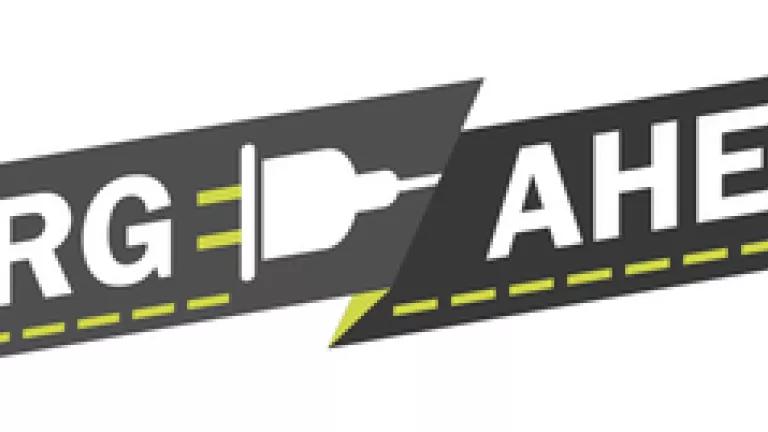
Imagine a California with substantially cleaner air and lower rates of asthma and cancer, especially in disadvantaged communities hardest hit by dangerous air pollution. Then imagine you’d be paying less in fuel costs – the equivalent of about $1 a gallon of gas – to help make it happen. That vision is closer to reality with today’s bi-partisan vote in the California senate on the Charge Ahead California Initiative.
The final tally was 27 to 9 to approve SB 1275 (de León), which aims to put 1 million electric cars, trucks and buses on roads within 10 years.
Now it’s up to the state assembly to send the bill to Governor Brown’s desk, moving California closer than ever to its goal of clearing the air in the Los Angeles basin, the San Joaquin Valley and the rest of the state of dangerous tailpipe pollution.
In fact, because cars and trucks are the state’s largest source of carbon emissions, such legislation is key to meeting California’s long-term climate goals. Electrifying the transportation sector is also necessary to meet federally mandated air quality standards. A complete transition to a zero emission passenger vehicle fleet would avoid $13 billion in environmentally related damages, including 10,000 asthma attacks, each year.
The Charge Ahead California Initiative will:
- Jumpstart a transition in the marketplace to widespread use of electric vehicles, including for freight and mass transit
- Put the state on a solid path to greatly improved air quality
- Help break oil companies’ grip on the transportation fuel market
- Substantially lower household transportation fuel costs
- Bring solutions to low-income communities that suffer most from air pollution
A million strong
A third of the nation’s electric cars and three-quarters of its electric trucks are already in California, thanks in large part to rebates, vouchers and incentives that would be expanded under SB 1275, which has a goal of bringing 1 million electric vehicles to the state within a decade.
For example, the Clean Vehicle Rebate Project, which now offers up to $2,500 to consumers for the purchase or lease of a new electric vehicle, but has been historically plagued by funding shortfalls, would be secured and expanded, with rebate levels dropping over time as technology costs come down.
The new law would also build on the state’s Hybrid and Zero-emission Truck and Bus Voucher Incentive, largely credited with bringing three-fourths of the nation’s electric trucks to California, and create new programs to clean up dirty emissions from the state’s trucks, buses and heavy equipment.
It would also increase access to clean transportation in disadvantaged communities by establishing car sharing programs, deploying charging stations in apartment complexes, providing access to financing options that would mean lower combined monthly car payments and fuel costs, and by offering incentives for the replacement of gas-guzzling “clunkers” with new or used electric cars or vouchers for transit and car sharing.
Cleaner air and cheaper fuel? Yes, it’s true.
California Senate Bill 1275, authored by Kevin de León and co-sponsored by the Coalition for Clean Air, Communities for a Better Environment, Environment California, The Greenlining Institute, and NRDC brings much needed relief from volatile petroleum fuel prices.
The average household spends $2,756 on gasoline and motor oil annually, hitting lower income households especially hard. But driving an electric car is the cost equivalent of driving a conventional vehicle on dollar-a-gallon gasoline.
And that dollar won’t go up to $5 with the next threat to the Strait of Hormuz. The price of electricity follows a predictable seasonal pattern, never deviating far from the buck-a-gallon equivalent mark. There’s virtually no difference between the high and low forecasted electricity prices because electricity is made from a diverse supply of largely domestic resources and is carefully regulated by state public utility commissions. Electricity is also coming increasingly from renewable resources such as wind and solar with low marginal operating costs.
The Unacceptable Alternative
If you’re still not convinced the state senate is doing the right thing, the bottom line is we will be hard pressed to meet California’s long-term climate goals or federally mandated clean air standards without this law.
We need to change these statistics about our state immediately:
- California has six of the top 10 most polluted cities in the country, according to the American Lung Association’s 2014 “State of the Air” report.
- Four in ten Californians, more than in any other state, live close enough to a freeway or busy road that they may be at increased risk of asthma, cancer and other health hazards.
- Nearly twice as many Californians die from traffic pollution as from motor vehicle accidents each year.
The fact is we can’t solve these persistent air quality problems without a massive shift to zero emission vehicles. Likewise, numerous independent studies conducted by government laboratories, agencies, academic institutes, and non-profits have concluded that greenhouse gas emissions cannot be reduced to levels needed to prevent the worst effects of climate change without widespread electrification of transportation.
Today’s senate vote is tangible evidence California is acting in response to the weight of this scientific consensus, bringing us closer to a zero emission future.
